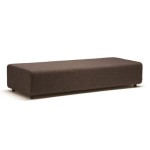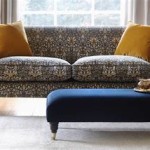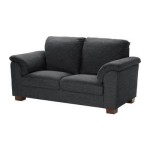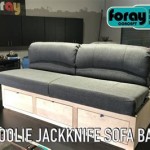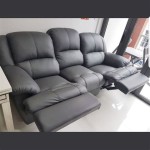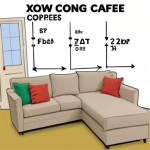Daybed vs. Sofa Bed: A Comparative Analysis for Functional Furniture
Consumers seeking versatile furniture pieces often consider daybeds and sofa beds. While both offer sleeping and seating functionality, key differences exist in their design, comfort, and overall suitability for various needs. Understanding these differences is crucial for making an informed purchasing decision.
A daybed typically resembles a twin-size bed frame with a back and sometimes sides, often incorporating design elements reminiscent of a sofa. They are designed to function primarily as seating during the day and can easily be converted into a bed when needed. This conversion typically involves simply adding bedding, as the sleeping surface is already present and doesn't require unfolding or extending a hidden mattress.
Sofa beds, conversely, are primarily sofas with a hidden mattress tucked inside. The conversion mechanism involves unfolding or pulling out the mattress to create a sleeping surface. The design prioritizes the sofa function, with the bed functionality being secondary. Sofa beds are typically larger than daybeds due to their dual nature.
One of the most significant distinctions between daybeds and sofa beds lies in their comfort levels. Daybeds, with their dedicated mattress platform, generally offer a more comfortable sleeping experience. The mattress can be chosen based on individual preferences for firmness and support. Since the mattress is not folded or stored away, it maintains its shape and doesn't suffer from the wear and tear associated with the constant unfolding and folding of a sofa bed mattress.
Sofa bed mattresses, on the other hand, are often thinner and less supportive due to space limitations. The folding mechanism necessitates a thinner mattress, which can impact sleep quality, particularly for individuals with back problems or those accustomed to thicker, more supportive mattresses. Moreover, the bar mechanism in the center of many sofa bed mattresses can be uncomfortable for some sleepers.
Size is another key differentiator. Daybeds typically come in twin or full sizes, making them suitable for single sleepers or children. While some larger daybeds exist, they are less common. Sofa beds offer a wider range of sizes, from twin to queen and occasionally even king, accommodating couples or families. This size flexibility makes them a viable option for larger spaces and guest rooms.
Aesthetically, daybeds offer a more streamlined and bed-like appearance, often featuring decorative backrests and sides. They can be styled with pillows and throws to enhance their sofa-like functionality. Sofa beds, designed primarily as sofas, come in a variety of styles, fabrics, and configurations, allowing greater flexibility in matching existing décor.
The conversion process also differs significantly. Daybeds require minimal effort to transition from seating to sleeping, simply requiring the addition of bedding. Sofa beds, however, require unfolding or pulling out the mattress, which can be cumbersome and require more physical effort. The mechanism itself can also be prone to wear and tear over time.
Cost is another factor to consider. Daybeds are generally less expensive than sofa beds due to their simpler construction and lack of complex mechanisms. Sofa bed prices vary greatly depending on the sofa's quality, size, and the mattress type. High-end sofa beds can be significantly more expensive than basic daybeds.
The choice between a daybed and a sofa bed ultimately depends on individual needs and preferences. Those prioritizing sleeping comfort and a streamlined aesthetic might find daybeds more suitable. Individuals seeking a primary sofa with occasional sleeping functionality and a wider range of size options may prefer a sofa bed.
Space availability also plays a critical role. Daybeds generally occupy less space than sofa beds, making them a practical choice for smaller rooms. Sofa beds, when folded, function as regular sofas, offering optimal space utilization in multi-functional living areas.
Frequency of use is another important consideration. For everyday sleeping, a daybed with a quality mattress is recommended. For occasional guest use, a sofa bed can provide a comfortable and convenient sleeping solution without sacrificing valuable living space.
Finally, maintenance requirements should be considered. Daybeds require standard bed maintenance, including regular sheet changes and mattress care. Sofa beds require additional maintenance related to the mechanism and may necessitate periodic cleaning of the mattress storage area.

How To Choose Between A Daybed Or Sleeper Sofa Pottery Barn
.png?strip=all)
Daybed Or Sleeper Sofas Comparing The Two

Futon Vs Daybed Picking The Most Feasible Option Sleep Judge

Deciding Between Daybed And Sleeper Sofas In Your Home Ivy Interiors

Sofa Style Daybeds Nesting Place Guest Room Daybed Office Combo

Sigmund Queen Sofa Bed Innovation Living

Daybed Vs Sofa Bed Blog Toons Furnishers

Vic Furniture Oat White Allegra Sofa Daybed With Trundle Temple Webster

Godeer White Wooden Daybed With Trundle Bed And 2 Storage Drawers Extendable Sofa Pt444953eeo The Home Depot

Uhomepro Daybed With Drawers Wood Storage 2 On Casters Wooden Platform Bed Great For Kids Guests Sleepovers Sofa Twin Frame No Box Spring Needed White Q18079


